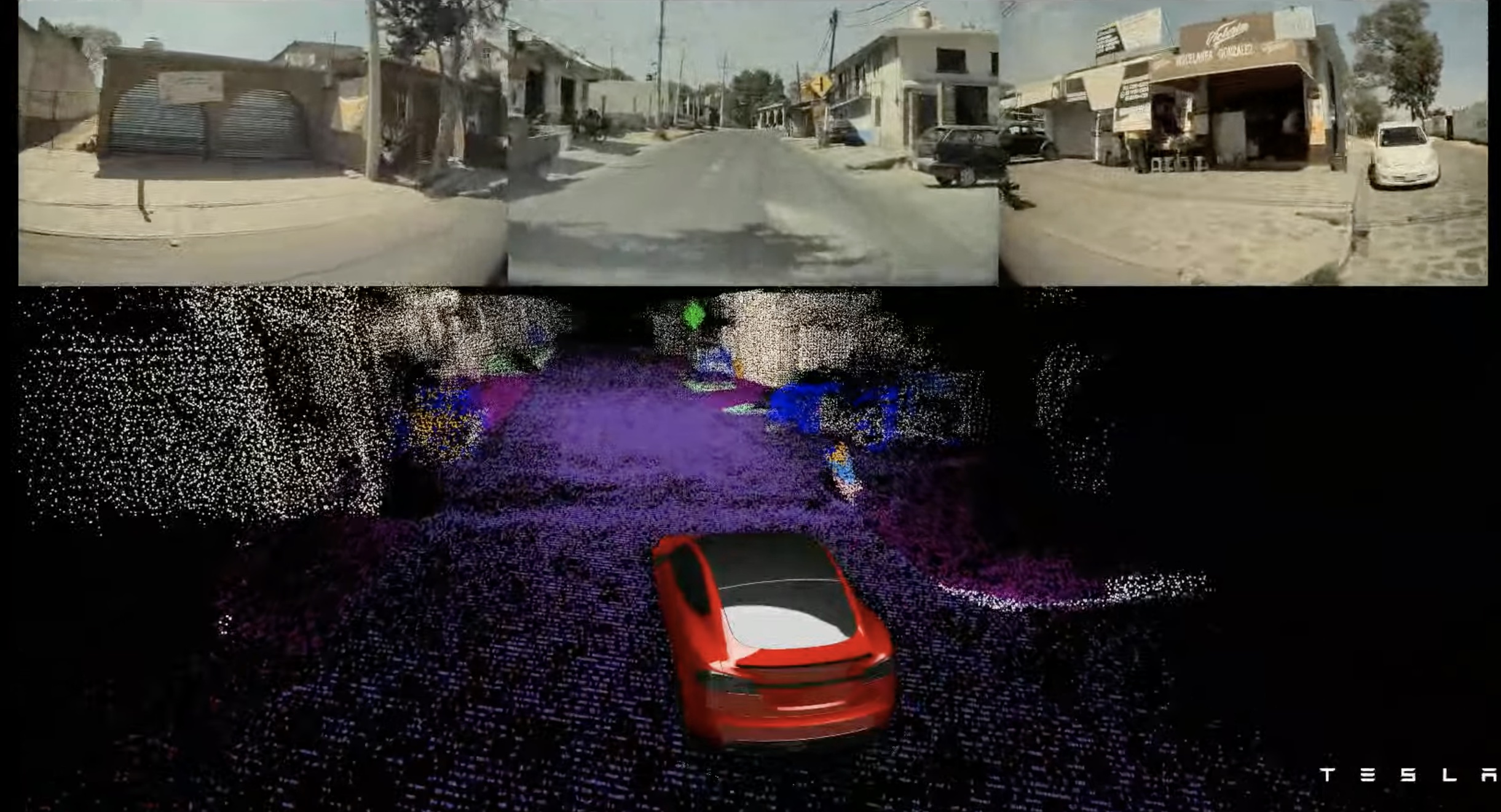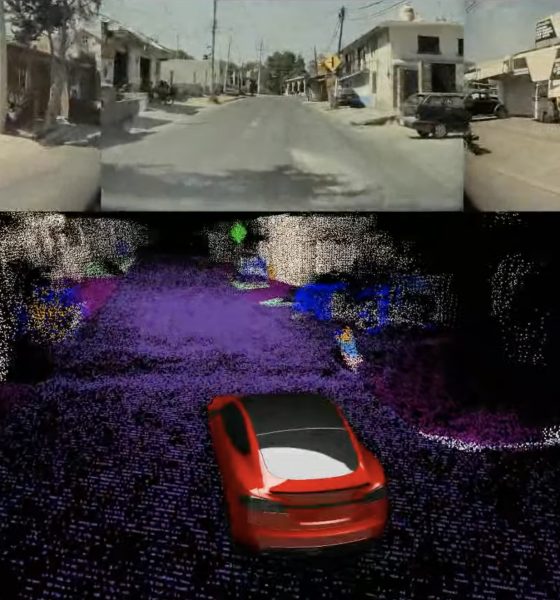Munro Live has become a channel where car expert Sandy Munro can educate the public on the inner workings of vehicles. In his latest video, Munro doesn’t hold back and spits out truths about the US government’s approach towards improving the local auto industry and its chosen champions in the fight to dominate the global car market.
Munro drives home two main points in his video. First, American EV maker Tesla doesn’t get the recognition or credit it deserves, particularly regarding their technological advancements like its artificial intelligence development. Second, legacy OEMs such as General Motors and Ford don’t have the technology to beat Chinese automakers in the global car market, specifically when talking about autonomous driving technologies.
Munro’s Tesla AI Day Review
Munro seemed very impressed by the technology and progress Tesla revealed during its AI day event. In his video, he particularly focused on Tesla’s D1 chip, which was developed in-house.
“It defies the imagination. One chip, one chip that Tesla has developed in recent history here could take the place of pretty much any major computer that might’ve been hanging around in the early 2000’s. These advancements are things that will save lives. Lots of lives,” he said.
While Tesla AI Day seemed to be a success by Munro’s standards, the government’s reaction to Tesla incurred his ire. He noticed that the same week Tesla AI Day took place, both the NHTSA and US Congress started investigating the EV maker’s Autopilot system.
To put things in perspective, Munro spit out some facts about vehicle safety. He shared that 212,500 vehicles fires were responsible for 560 civilian deaths in 2018. Teslarati was able to confirm Munro’s numbers on vehicle fires with National Fire Protection Association (NFPA).
In 2018, a little over 17 million vehicles were sold in the United States, and EVs only made up 2% of total vehicle sales. A total of about 360,000 electric vehicles were sold in 2018, and 38% of that number was just the Tesla Model 3.
Over the years, Tesla vehicles and fires have been a mainstay in mainstream media (MSM). With regards to EV fires, Munro pointed out that gasoline burns easier than batteries and even invited people to try it out—although his video editors warned people against doing so at home. According to the NFPA, collisions were the main cause of vehicle fires that resulted in death.
Munro’s Rant
After spitting some facts about electric vehicle safety. Munro drove his point home. “I’ve driven almost every self-driving car or even autopilot car and it’s crap,” Munro said about the progress legacy OEMs have made with autonomous technology. He chided the government for continuously praising traditional automakers for their “participation” in self-driving development while continuously bashing Tesla for making actual progress in the field.
He also noted that Tesla was the only US car company that still made true, blue American vehicles that could trump the main competition in the global autonomous car market: China’s upcoming EV makers that are just as focused on tech as Tesla.
“The Chinese are creating [self-driving] systems right now that are equivalent or better than anything GM, VW, BMW, Daimler, Toyota, Honda, Kia, Ford, and anybody else that’s out there is gonna be making, and we’re crushing the only source of real American ingenuity? Are you kidding me?” Munro remarked.
Overall, Munro’s message was clear: veteran OEMs in the United States and the traditional auto sector in general are on track to be overtaken by fast-moving, upstart automakers in China that prioritize tech and innovation in their vehicles. Tesla is ahead of the pack right now, but if the company slows down due to continued resistance from the powers-that-be, then it would not be surprising if China’s champions like NIO and Xpeng become the golden standard for in-car tech and autonomous driving in the near future.
Watch Sandy Munro’s self-described “rant” in the video below.
The Teslarati team would appreciate hearing from you. If you have any tips, reach out to me at maria@teslarati.com or via Twitter @Writer_01001101.

Elon Musk
Elon Musk confirms xAI’s purchase of five 380 MW natural gas turbines
The deal, which was confirmed by Musk on X, highlights xAI’s effort to aggressively scale its operations.

xAI, Elon Musk’s artificial intelligence startup, has purchased five additional 380 MW natural gas turbines from South Korea’s Doosan Enerbility to power its growing supercomputer clusters.
The deal, which was confirmed by Musk on X, highlights xAI’s effort to aggressively scale its operations.
xAI’s turbine deal details
News of xAI’s new turbines was shared on social media platform X, with user @SemiAnalysis_ stating that the turbines were produced by South Korea’s Doosan Enerbility. As noted in an Asian Business Daily report, Doosan Enerbility announced last October that it signed a contract to supply two 380 MW gas turbines for a major U.S. tech company. Doosan later noted in December that it secured an order for three more 380 MW gas turbines.
As per the X user, the gas turbines would power an additional 600,000+ GB200 NVL72 equivalent size cluster. This should make xAI’s facilities among the largest in the world. In a reply, Elon Musk confirmed that xAI did purchase the turbines. “True,” Musk wrote in a post on X.
xAI’s ambitions
Recent reports have indicated that xAI closed an upsized $20 billion Series E funding round, exceeding the initial $15 billion target to fuel rapid infrastructure scaling and AI product development. The funding, as per the AI startup, “will accelerate our world-leading infrastructure buildout, enable the rapid development and deployment of transformative AI products.”
The company also teased the rollout of its upcoming frontier AI model. “Looking ahead, Grok 5 is currently in training, and we are focused on launching innovative new consumer and enterprise products that harness the power of Grok, Colossus, and 𝕏 to transform how we live, work, and play,” xAI wrote in a post on its website.
Elon Musk
Elon Musk’s xAI closes upsized $20B Series E funding round
xAI announced the investment round in a post on its official website.

xAI has closed an upsized $20 billion Series E funding round, exceeding the initial $15 billion target to fuel rapid infrastructure scaling and AI product development.
xAI announced the investment round in a post on its official website.
A $20 billion Series E round
As noted by the artificial intelligence startup in its post, the Series E funding round attracted a diverse group of investors, including Valor Equity Partners, Stepstone Group, Fidelity Management & Research Company, Qatar Investment Authority, MGX, and Baron Capital Group, among others.
Strategic partners NVIDIA and Cisco Investments also continued support for building the world’s largest GPU clusters.
As xAI stated, “This financing will accelerate our world-leading infrastructure buildout, enable the rapid development and deployment of transformative AI products reaching billions of users, and fuel groundbreaking research advancing xAI’s core mission: Understanding the Universe.”
xAI’s core mission
Th Series E funding builds on xAI’s previous rounds, powering Grok advancements and massive compute expansions like the Memphis supercluster. The upsized demand reflects growing recognition of xAI’s potential in frontier AI.
xAI also highlighted several of its breakthroughs in 2025, from the buildout of Colossus I and II, which ended with over 1 million H100 GPU equivalents, and the rollout of the Grok 4 Series, Grok Voice, and Grok Imagine, among others. The company also confirmed that work is already underway to train the flagship large language model’s next iteration, Grok 5.
“Looking ahead, Grok 5 is currently in training, and we are focused on launching innovative new consumer and enterprise products that harness the power of Grok, Colossus, and 𝕏 to transform how we live, work, and play,” xAI wrote.
Investor's Corner
Tesla gets price target bump, citing growing lead in self-driving

Tesla (NASDAQ: TSLA) stock received a price target update from Pierre Ferragu of Wall Street firm New Street Research, citing the company’s growing lead in self-driving and autonomy.
On Tuesday, Ferragu bumped his price target from $520 to $600, stating that the consensus from the Consumer Electronics Show in Las Vegas was that Tesla’s lead in autonomy has been sustained, is growing, and sits at a multiple-year lead over its competitors.
CES 2026 validates Tesla’s FSD strategy, but there’s a big lag for rivals: analyst
“The signal from Vegas is loud and clear,” the analyst writes. “The industry isn’t catching up to Tesla; it is actively validating Tesla’s strategy…just with a 12-year lag.”
The note shows that the company’s prowess in vehicle autonomy is being solidified by lagging competitors that claim to have the best method. The only problem is that Tesla’s Vision-based approach, which it adopted back in 2022 with the Model 3 and Model Y initially, has been proven to be more effective than competitors’ approach, which utilizes other technology, such as LiDAR and sensors.
Currently, Tesla shares are sitting at around $433, as the company’s stock price closed at $432.96 on Tuesday afternoon.
Ferragu’s consensus on Tesla shares echoes that of other Wall Street analysts who are bullish on the company’s stock and position within the AI, autonomy, and robotics sector.
Dan Ives of Wedbush wrote in a note in mid-December that he anticipates Tesla having a massive 2026, and could reach a $3 trillion valuation this year, especially with the “AI chapter” taking hold of the narrative at the company.
Ives also said that the big step in the right direction for Tesla will be initiating production of the Cybercab, as well as expanding on the Robotaxi program through the next 12 months:
“…as full-scale volume production begins with the autonomous and robotics roadmap…The company has started to test the all-important Cybercab in Austin over the past few weeks, which is an incremental step towards launching in 2026 with important volume production of Cybercabs starting in April/May, which remains the golden goose in unlocking TSLA’s AI valuation.”
Tesla analyst breaks down delivery report: ‘A step in the right direction’
Tesla has transitioned from an automaker to a full-fledged AI company, and its Robotaxi and Cybercab programs, fueled by the Full Self-Driving suite, are leading the charge moving forward. In 2026, there are major goals the company has outlined. The first is removing Safety Drivers from vehicles in Austin, Texas, one of the areas where it operates a ride-hailing service within the U.S.
Ultimately, Tesla will aim to launch a Level 5 autonomy suite to the public in the coming years.










